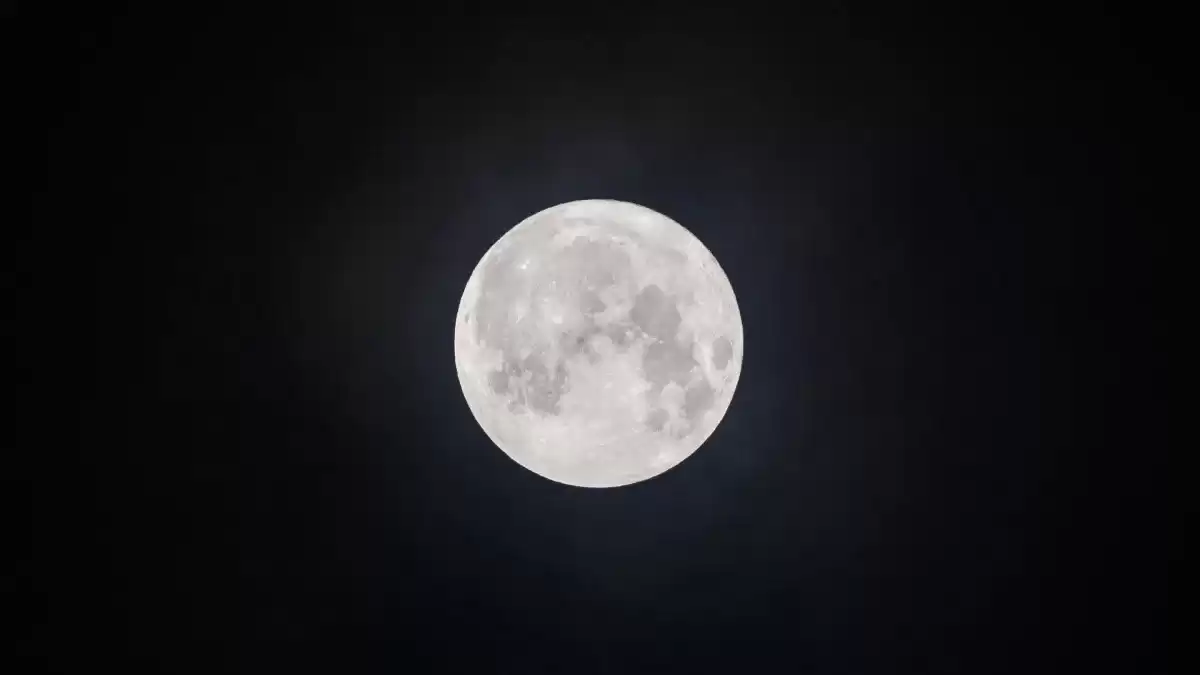Super Blue Moon 2023: Exact Time Revealed
The next full moon on August 30, 2023 will be a Blue Moon and a supermoon, appearing larger and brighter in the sky.
Get ready for an extraordinary celestial event! On Wednesday, Aug. 30, the sky will be graced with one of the most stunning and brilliant moons of 2023. This upcoming full moon is commonly referred to as a "Blue Moon," not because of its color, but due to its occurrence as the second full moon in a calendar month. Just like the first full moon of August, known as the Sturgeon Moon on Aug. 1, this Blue Moon will also be a supermoon. This means that it will appear larger in the sky as it coincides with the moon's closest approach to Earth.
According to In the Sky, the Super Blue Moon will rise shortly after sunset at 7:10 p.m. EDT (2310 GMT) from the eastern horizon. However, the peak brightness and size will not be at this moment. The exact time of the full moon is when it is 180 degrees opposite the sun, completely illuminating the sky over Earth.
For this year's Blue Moon, it will be opposite the sun at 9:36 p.m. EDT on Wednesday, Aug. 30 (0336 on Aug. 31), while in the constellation of Aquarius. The Blue Moon will then set on Thursday, just before the sun rises at around 6:46 a.m. EDT (1046 GMT).
To clarify, a Blue Moon is typically defined as the second full moon in a single calendar month. However, it can also refer to the third full moon in a season that has four full moons. With approximately 12.4 full moons occurring each year, there are times when a 12-month period experiences 13 full moons. This requires one of the months to accommodate two full moons, resulting in a Blue Moon.
The moon's cycle takes about 29.5 days to go from one full moon to the next. Consequently, this month began with the Full Sturgeon Moon and will end with the Blue Moon. It's important to note that not all Blue Moons are supermoons like the one on Aug. 30.
A supermoon occurs when a full moon coincides with the moon's closest approach to Earth. Since the moon's orbit is not perfectly circular but rather elliptical, there are times when it is farther away (apogee) and times when it is closer (perigee) to our planet. The distance between Earth and the moon during perigee and apogee ranges from approximately 220,000 miles (350,000 kilometers) to 253,000 miles (408,000 km), with a difference of about 14%.
Despite this variation in distance, the visual difference between a standard full moon and a supermoon is not significant. While a supermoon may appear slightly larger and brighter, this is usually imperceptible to the average observer.
The convergence of a Blue Moon and a supermoon is quite rare. While it is possible for a super blue moon to occur twice within the same month, it can also be separated by intervals as long as 20 years. According to NASA, the average time between Super Blue Moons is approximately 10 years.
After Aug. 30, 2023, the next Super Blue Moon will not be until January 2037, followed by another in March 2037, as confirmed by NASA.
Although September's Full Corn Moon on Sept. 29 will not be a Super Blue Moon, it will still be a supermoon. This will mark the fourth consecutive supermoon of the year and the final one in 2023. Looking ahead, In the Sky reports that the next supermoon will occur on Sept. 18, 2024, followed by another one a month later on Oct. 17, 2024.
So, mark your calendars and prepare for the awe-inspiring sight of the Super Blue Moon on Wednesday, Aug. 30, 2023. It will be a breathtaking display of nature's wonders that you won't want to miss.











Comments on Super Blue Moon 2023: Exact Time Revealed